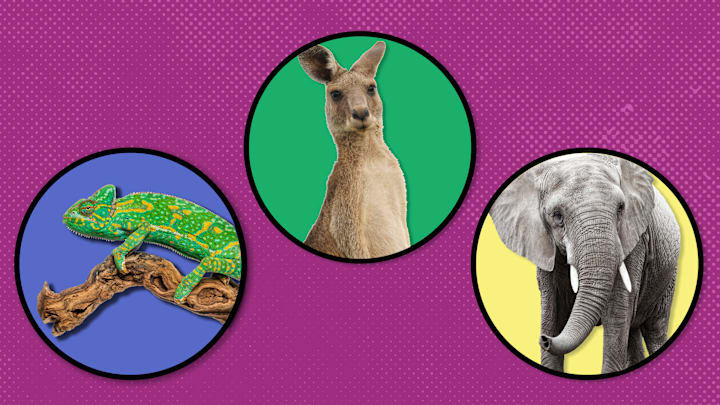Every time you open up a Google Doc with the setting “anyone with a link can view,” the contents of that document probably aren’t the only thing you scan. Your eyes likely also check for the icon on the right hand corner to see whether you’re a wombat, an aurochs, a chupacabra, or any of the other 70 animal icons that are currently available to be assigned to each anonymous user.
All shared Google Docs feature a row of these animal icons. The images are assigned to every user currently viewing the file who wasn’t directly invited to view it. That means if you share a document via a “sharable link” rather than specifically typing in someone’s email address to invite them, the viewer will show up as an anonymous animal—even if you have their contact information.
Those animals go back further than you think, according to Google spokeswoman Kyree Harmon. In 2012, Google employees simply wanted to make the company’s straightforward Docs feature—which was rebranded from “Google Documents” and included as part of the new Google Drive suite—more fun. “At the time, the proposal for anonymous viewers was to show them as a unique but lengthy number sequence, e.g. Anonymous35123512425,” Harmon told Mental Floss in 2018. “[Then] the team wanted to see if they could come up with something more friendly and more human—and during a brainstorm, the alliteration Anonymous Animals came up. From there, the visual design team got involved to build out icons.”
According to Harmon, nobody remembers which creatures started it all, but “they were all fairly typical animals.” Eventually, the list expanded to critters that were a little more playful—not to mention mythical and even non-animal. (And in case you were wondering, no, you can’t choose your animal or check which icon you’ve been given without having another user in the Doc tell you. That’s part of the fun!) That explains why the capybara, the world’s largest rodent, is on the list, along with the axolotl, a “smiling” baby-faced salamander; Nyan Cat, a viral meme from 2011 featuring a pixelated flying feline with a Pop-Tart for a body; and the kraken, a giant, squid-like sea monster from Scandinavian legends.
Gradually, Harmon said, the engineers got even more creative and began to include those on the endangered and extinct list, like the quagga, an animal related to the modern zebra that went extinct in 1883. (Since then, there have been attempts to “revive” the species by breeding zebras that shared the quagga’s distinctive pattern, in order to create herds that resembled the original quaggas.)
The list grew quickly, and by 2016, it had reportedly expanded to include 68 animals. Moose, tiger, and llama had yet to show up at that point, and neither had the jackalope, a half-rabbit half-deer creature whose taxidermied remains appear mounted on walls throughout the American west. Those animals were added later; Harmon said in 2018 that there were no plans to expand the catalog of 73 creatures.
So what happens if there are more anonymous users actively using a Google doc than available animals? It doesn’t happen often enough to be a concern. “If Docs were consistently receiving more than 73 simultaneous anonymous viewers,” she says, “we certainly wouldn’t want to double up on any animal and cause confusion.”
The Complete List of Anonymous Animals in Google Docs
- Alligator
- Anteater
- Armadillo
- Aurochs
- Axolotl
- Badger
- Bat
- Beaver
- Buffalo
- Camel
- Capybara
- Chameleon
- Cheetah
- Chinchilla
- Chipmunk
- Chupacabra
- Cormorant
- Coyote
- Crow
- Dingo
- Dinosaur
- Dolphin
- Duck
- Elephant
- Ferret
- Fox
- Frog
- Giraffe
- Gopher
- Grizzly
- Hedgehog
- Hippo
- Hyena
- Ibex
- Ifrit
- Iguana
- Jackal
- Jackalope
- Kangaroo
- Koala
- Kraken
- Lemur
- Leopard
- Liger
- Llama
- Manatee
- Mink
- Monkey
- Moose
- Narwhal
- Nyan Cat
- Orangutan
- Otter
- Panda
- Penguin
- Platypus
- Pumpkin
- Python
- Quagga
- Rabbit
- Raccoon
- Rhino
- Sheep
- Shrew
- Skunk
- Slow Loris
- Squirrel
- Tiger
- Turtle
- Walrus
- Wolf
- Wolverine
- Wombat
A version of this story ran in 2018; it has been updated for 2023.
